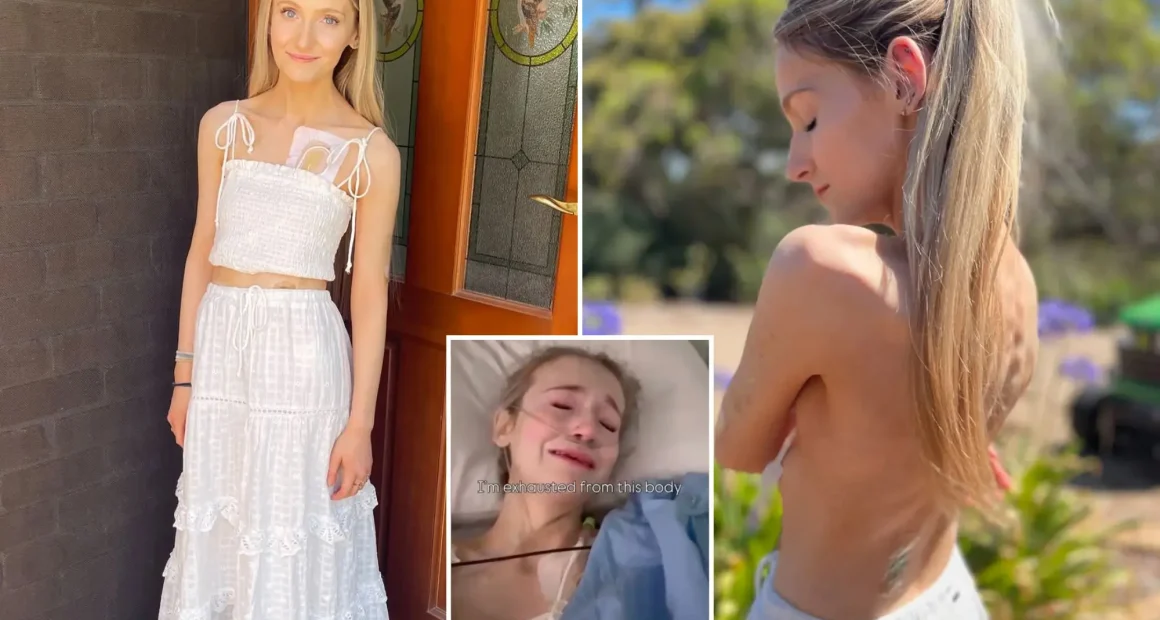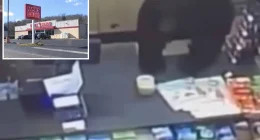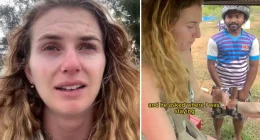An Australian woman has chosen to pursue medically assisted dying so she can “leave on her own terms” after spending years living with a rare, terminal neurological disorder.
Annaliese Holland, 25, said she has been unwell since childhood, enduring frequent hospitalizations as doctors searched for the cause of her chronic pain, nausea, and persistent vomiting. The severity of her condition has left her reliant on IV nutrition for the past decade, she told News.com.au.
She was eventually diagnosed with autoimmune autonomic ganglionopathy — a rare autoimmune disorder in which the body attacks the autonomic ganglia, the nerves that regulate involuntary bodily functions.
Annaliese Holland has chosen to end her life with medical assistance after spending years battling a rare and terminal neurological disorder.
Long before receiving a diagnosis, Holland experienced severe gastrointestinal issues — her bowels behaved as though they were blocked, despite no physical obstruction.
Attempts to sustain her with feeding tubes failed as she continued to vomit. When doctors later discovered that her stomach wasn’t emptying properly, she was placed on total parenteral nutrition, a method of delivering nutrients directly into the bloodstream to bypass the digestive system.
“Because the line goes straight into your bloodstream, any infection can turn into sepsis very quickly, which is incredibly dangerous,” Holland said. She added that she has survived sepsis — a life-threatening condition in which the body’s response to infection harms its own tissues and organs — 25 times.
Doctors spent most of her childhood searching for the cause of her symptoms, but it wasn’t until she turned 18 and was transferred to an adult hospital that she finally received a diagnosis.
By age 22, she was told her condition was terminal.
Holland said she learned her condition was terminal when she was 22.
The medications used to manage her illness have severely weakened her bones, causing advanced osteoporosis. She now lives with constant pain and has suffered four spinal fractures, a fractured sternum, and dangerous pressure on her heart and lungs.
“I was so miserable,” she said. “You can’t change it, so you just have to deal with it. Even though there are beautiful moments in my days, they’re exhausting and long. I’m in chronic, debilitating pain.”
Her illness has forced her to watch life pass by from hospital rooms — where she spent both her 18th and 21st birthdays — while friends move forward, getting married and starting families.
“Everyone’s life is moving and I’m just stuck. I’m not living. I’m surviving every day, which is tough,” she said, comparing her condition to “walking on a field of landmines.”
“No man wants to date someone who’s dying — I get it,” she added.
Knowing her life will eventually end from the disease, the 25-year-old has chosen to “die on my own terms” through voluntary assisted dying (VAD), a legal option in Australia that allows terminally ill patients to self-administer medication to peacefully end their life.
She has watched life move forward from her hospital room — where she spent both her 18th and 21st birthdays — as her friends go on to marry and start families.
“Life for me now is waking up each day and doing what I need to do medically, taking the painkillers, trying to get through the day, only to go to bed and do it all again,” she said.
“I have the most incredible team of doctors and nurses who have witnessed everything I’ve endured, and I told them I don’t want this anymore.”
While Holland has found peace with her decision, her parents and sister have been devastated.
She recalled a conversation with her father in the kitchen: “I said, ‘Dad, I’ve had enough.’ And he said, ‘So you’re giving up?’”
The turning point for her father, Patrick, came after she was revived in the hospital and begged him, “Dad, please let me go. I won’t hate you if you do.”
“I told him, ‘If this happens again, I don’t want anything. And please know that in my heart, you letting me go and saying no to treatment… I’m happy with that. It’s what I want,’” Holland said, her voice breaking.
“He looked at me and said, ‘I don’t know how you do it, and I totally understand that you’ve had enough.’”
Her mother, Armanda, said she still hopes for a miracle, though she “realistically understands the challenges” her daughter faces.
Knowing that her illness will ultimately end her life, the 25-year-old said she has chosen to “die on my own terms” through voluntary assisted dying — a legally regulated option in Australia that allows eligible terminally ill patients to access life-ending medication under strict safeguards.
After completing a three-week assessment process, Holland was approved for VAD.
“I know it’s strange to say, but I was relieved — even emotional — when I found out I’d been approved,” she recalled. “I was crying.”
She said the decision has been emotionally complex.
“It’s hard because I’m in pain and I want peace, but then I think about the pain it puts on my family,” Holland said. “There’s this constant battle in your head of not wanting to hurt them, so I’ll be thoughtful about how everything happens.”
Holland said she feels fortunate to have access to an option that gives her some control at the end of her illness.
“It takes a lot of strength to even consider VAD,” she said. “It’s not about giving up — it’s about recognizing you’ve reached your limit after fighting so hard.”













